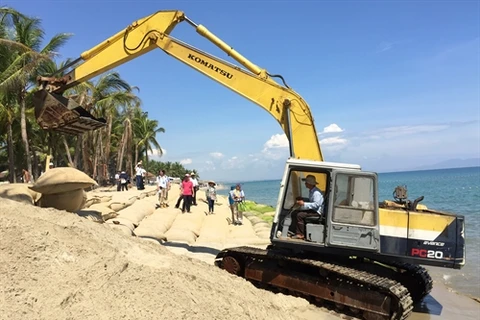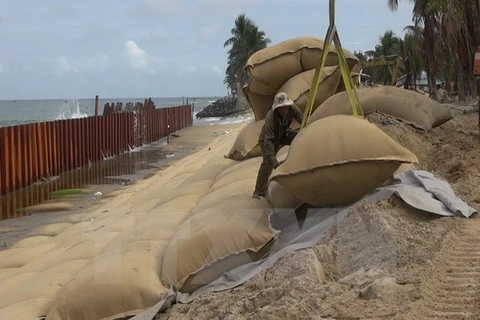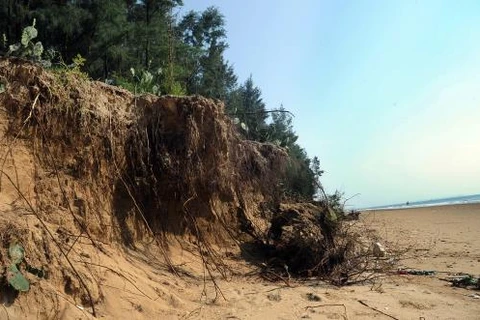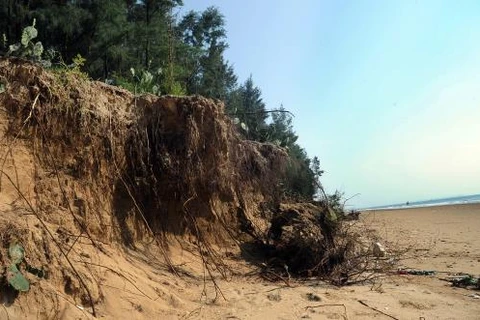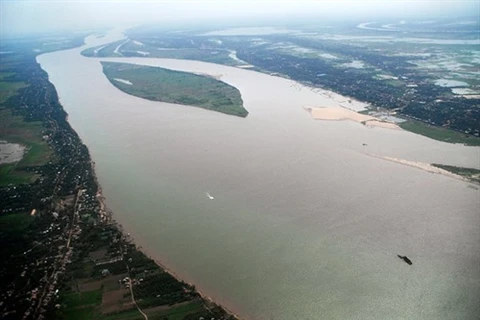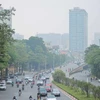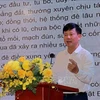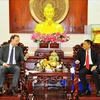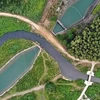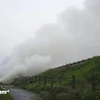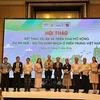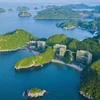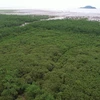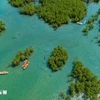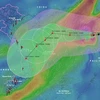Da Nang (VNA) - The central coastal city of Da Nang has approved a 2.1km sea dyke project in the Lien Chieu District with a total investment of 200 billion VND (nearly 9 million USD) in an effort to prevent coastal erosion due to rising sea level and climate change.
The city-funded project is designed to protect a pristine beach section of Xuan Thieu-Nam O Village, along Nguyen Tat Thanh Street, that is the most vulnerable to erosion during the annual rainy season (between October and April).
It is one of 11 beaches in Son Tra, Thanh Khe and Lien Chieu districts developed by the city.
Between 2005 and 2010, the city invested 1.3 trillion VND (58 million USD) to build and upgrade a 24.5km sea dyke system in the most disaster-affected areas. But in 2013, a 110m section of the sea dyke in the Son Tra District was washed away by sea water during Storm Nari.
Vietnam’s 3,260km coast line is under threat of rising sea levels due to climate change and the sea dyke system is thus of great importance.
The Government has urged further development of the dykes - to mitigate natural disasters, protect people and the environment and create an integrated transport system.
Since 2006, a programme to upgrade sea dykes has been implemented from Quang Ninh to Quang Nam Province along the country’s northern coast.
To date, the 13 provinces involved have reinforced nearly 300km of sea dykes, renovated or built sluices and planted hundreds of hectares of wave-blocking trees.-VNA

